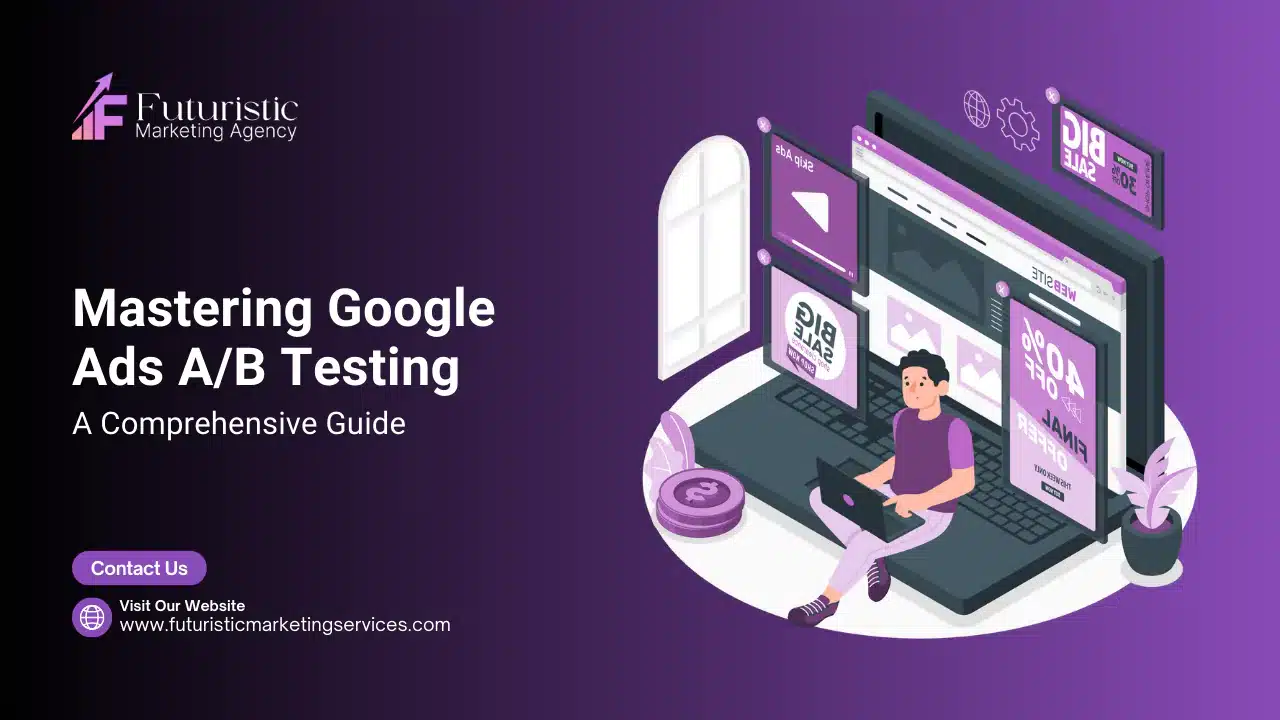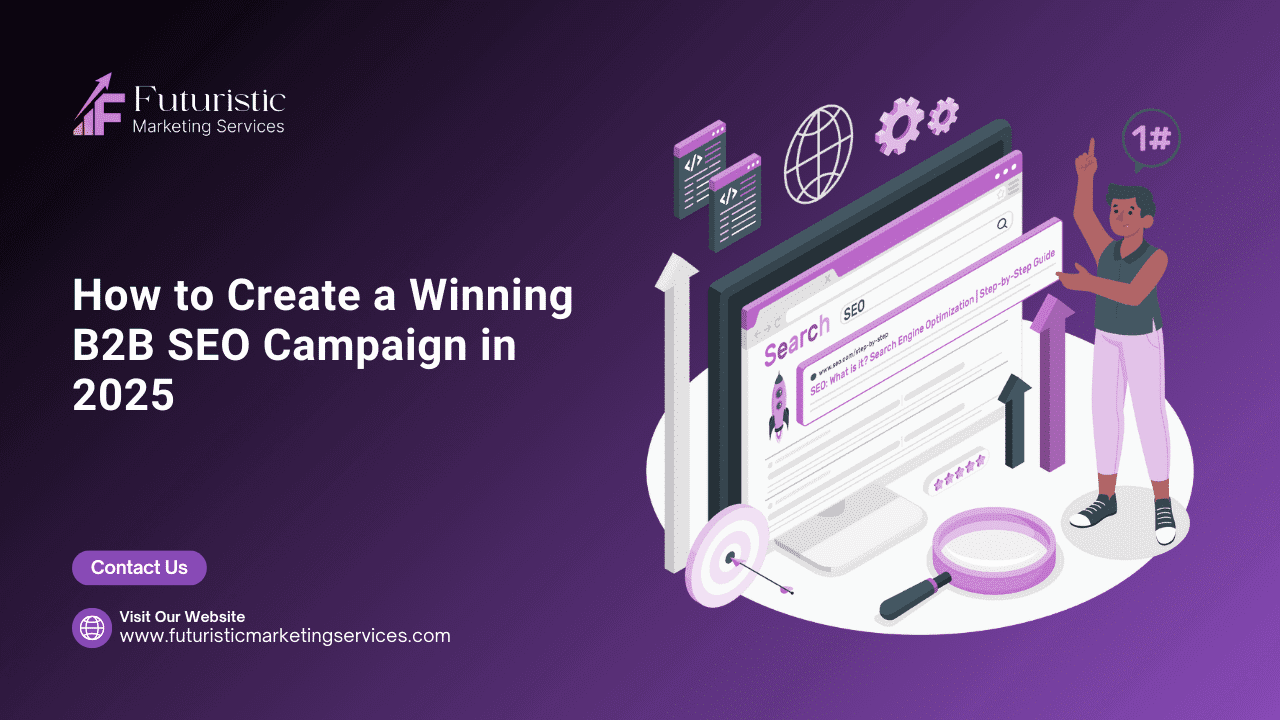A/B testing in Google Ads is a critical strategy for advertisers looking to optimize their campaigns, increase conversions, and lower advertising costs. Businesses that consistently refine their ads through testing can experience a 49% increase in conversion rates, according to recent industry studies.
This comprehensive guide will cover
- How A/B testing works in Google Ads
- Step-by-step instructions for setting up A/B tests
- Best practices to ensure accurate results
- Common mistakes to avoid
- Advanced strategies for maximum ad performance

What is A/B Testing in Google Ads?
A/B testing, also known as split testing, is the process of running two versions of an ad simultaneously to determine which one performs better. By systematically testing headlines, descriptions, CTAs, and landing pages, advertisers can identify the most effective elements for improving click-through rates (CTR) and conversions.
Why is A/B Testing Important?
- Optimize Ad Spend: Identify which ad variations provide the best return on investment.
- Improve Engagement: Test different messages to see what resonates most with users.
- Increase Conversions: Adjust elements like CTAs to drive more conversions.
- Lower Cost Per Click (CPC): High-performing ads receive higher Quality Scores, leading to lower CPCs.
How to Set Up A/B Testing in Google Ads (Step-by-Step Guide)
Step 1: Choose a Variable to Test
To ensure accurate results, test one element at a time:
- Headlines: Compare a question-based headline vs. a statement.
- Descriptions: Test different value propositions.
- Call-to-Action (CTA): "Get Started Today" vs. "Try for Free."
- Display URLs: Keyword-rich vs. simplified URLs.
- Landing Pages: Test different page layouts or messaging.
Step 2: Create Two Ad Variations
- Log into Google Ads and navigate to "Drafts & Experiments."
- Select the campaign you want to test.
- Create a new experiment and generate two ad variations (A & B).
- Allocate 50/50 traffic to both ads.
Step 3: Define Key Performance Indicators (KPIs)
Monitor the following metrics:
- Click-Through Rate (CTR): Measures how often users click on your ad.
- Conversion Rate: Tracks how many users take the desired action.
- Cost Per Conversion: Evaluates the cost-effectiveness of your ads.
It is recommended to run the test for at least 14-30 days to collect statistically significant data. Read: Data-Driven PPC Strategies for Maximum ROI

Best Practices for Google Ads A/B Testing
- Test One Element at a Time: Avoid testing multiple changes simultaneously to get clear results.
- Run Tests for at Least Two Weeks: Ending a test too early can lead to misleading conclusions.
- Use Google Ads Experiments: Ensures an even traffic split and prevents biases.
- Ensure Statistical Significance: Use an A/B testing calculator to confirm validity.
Common A/B Testing Mistakes and How to Avoid Them
- Testing Too Many Variables: Stick to a single element per test for reliable results.
- Stopping Tests Prematurely: Let tests run for a minimum of two weeks to capture meaningful data.
- Ignoring Audience Segmentation: Different user segments may respond differently to ad variations.
Advanced A/B Testing Strategies
Step 3: Define Key Performance Indicators (KPIs)
- A/B Testing:Tests one variable at a time.
- Multivariate Testing: Tests multiple elements simultaneously, suitable for high-traffic accounts.
Sequential Testing for Continuous Optimization
Rather than running a single test and stopping, use sequential testing to refine your ads continuously:
- Run an A/B test.
- Apply the winning element.
- Conduct another A/B test with a new element.
- Repeat to optimize ad performance continuously.

Real-World A/B Testing Case Studies
E-Commerce Brand Increases Conversions by 40%
- Tested Variable: Call-to-Action (CTA)
- Comparison:: "Get Your Free Trial" vs. "Start Now"
- Winning Variation:: "Get Your Free Trial" increased conversions by 40%.
SaaS Company Reduces Cost Per Click (CPC) by 22%
- Tested Variable:: Ad Headlines
- Comparison:: Benefit-driven vs. pain-point-focused headlines
- Winning Variation:: The pain-point-focused headline reduced CPC by 22%.
Conclusion: Why A/B Testing is Essential for Google Ads Success
A/B testing is an essential tool for refining Google Ads campaigns. By continuously testing and optimizing, advertisers can:
- Reduce ad spend waste by identifying high-performing variations.
- Improve CTR and conversion rates through data-driven decisions.
- Achieve higher ROI by lowering CPC and increasing ad relevance.
Futuristic Marketing Services specializes in helping businesses maximize their Google Ads performance through expert A/B testing and optimization. Get a Free Google Ads Audit









